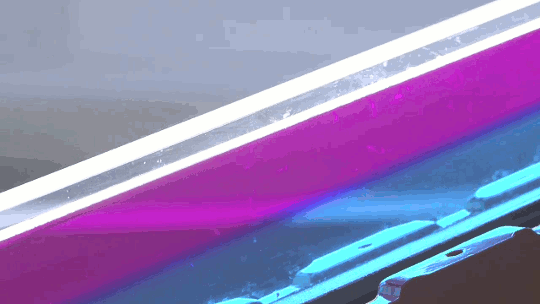Whether young or old, everyone enjoys blowing soap bubbles, and the bigger the bubble, the more impressive it is. Researchers have been on a quest to discover how bubbles can survive with volumes measured in the tens of meters and thicknesses of mere microns.
The key to these behemoth bubbles are the polymer chains inside them. The long molecules of polymers get entangled with one another and resist further stretching, which strengthens the soap film. The researchers found that a mixture of polymer lengths are even better for long-lasting bubbles because they entangle more fully than polymers that are all the same size.
But if what you really want are practical results, I have good news for you: the researchers have released their recommended recipe for making the best giant soap bubbles. It’s included in the video below, but I’ve also reproduced it in text for easier recreation (with thanks to Ars Technica):
Giant Soap Bubble Solution
From the Burton Lab, via Ars Technica
Ingredients
1 liter of water (about 2 pints)
50 milliliters of Dawn Professional Detergent (a little over 3 TBSP)
2-3 grams of guar powder, a food thickener (about 1/2 heaping TSP)
50 milliliters of rubbing alcohol (a little more than 3 TBSP)
2 grams of baking powder (about 1/2 TSP)Directions
Mix the guar powder with the alcohol and stir until there are no clumps.Combine the alcohol/guar slurry with the water and mix gently for 10 minutes. Let it sit for a bit so the guar hydrates. Then mix again. The water should thicken slightly, like thin soup or unset gelatin.
Add the baking powder and stir.
Add the Dawn Professional Detergent and stir gently to avoid causing the mixture to foam.
Dip a giant bubble wand with a fibrous string into the mixture until it isf fully immersed and slowly pull the string out. Wave the wand slowly or blow on it to create giant soap bubbles.
Happy bubble making! (Image credit: Burton Lab; video credit: Emory University; research credit: S. Frazier et al.; via Ars Technica; submitted by Kam-Yung Soh)






